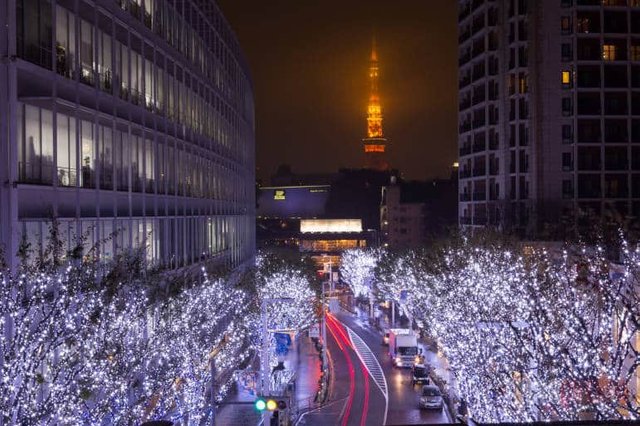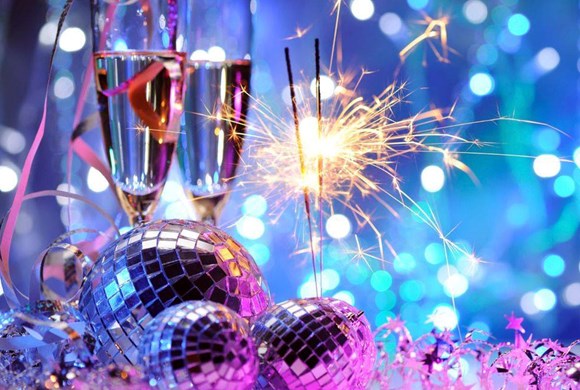
So the winter holidays in japan are muted by most standards. Most visitors, they find this as a welcome change to the constant carols and everything wrapped in Christmas decorations you find in other cities. Even if Christmas it's not making part of their religional tradition, still they celebrate it, maybe you'll find more beautifull decorations then you find anywhere. But, their take is slightly different. So what Tokyo is like over next few weeks? Here are some points on what to expect and look forward, along with some practical tips to make most out of your holiday.
"The Date Night" on December 24th
Actually, In japan, December 24th and 25th are regular working days, although in some ways if feels like December 24th is a bigger day than the 25th. During Bubble Era, Christmas Eve was considered the most romantic night of the year. A young couple would have a nice dinner, maybe a stroll under the Christmas atmosphere of the city, and then hussle off to a hotel. The story of a homeless, pregnant young women and her parnter looking for a shelter refference is connected with a romance in a good example of how Japanese interpret a holiday. Churches holding Christmas Eve services will be packed with the aforementioned couples out on a date. The church service is treated as an event to go to, pretty much lie a concert before the romantic dinner.
One thing to expect is long lines in a cake shops, supermarkets, fast foods, and convenience stores as people pick up their pre-orderd Christmas cakes (The most picked one composed mainly of an airy fluffy cake, whipped cream and strawberries) and buckets or trays of fried chicken (the result of an extremly successful advertising campaigh "KFC Christmas Bucket") for an elaborate dinner with family. And yes, you read that right: Only in Japan do you pre-oreder from a fastfood joint and convenience stores. However, present are not expected to be given or exchanged as much as in other countries.

Christmas Ends on December 25, But the holiday continues!
When does Christmas really end? In the tradition of the Catholics, some keep their decorations until January 6th, Epiphany, when the Three Kings present the baby Jesus with their gifts. Some for a week or two longer longer if you wait for the start of the "Ordinary Time Liturgy." Non-believers in other countries where Christmas is celebrated tend to keep their Christmas decorations at least until the festivities of the New Year.
The holiday season in Japan is about is wrapping up the year and getting ready for the next. This is why you will witness something quite astonishing on December 26th: Not a trace of Christmas. Gone. All gone. No trace of sales on Christmas cakes, candies, or decorations. No bargain sales related to Christmas. They treat Christmas as someone’s birthday, not a way of commerce. What you will find on December 26th are decorations related to bringing in the new year. And throughout the month of December, bonenkai (forget-the-year parties) are an opportunity for people to get together to look back over the year. In most cases they become opportunities for people to consume large quantities of alcohol and blow off steam. As a visitor, you will meet your fair share of drunk businessmen (almost always men), some of who may want to practice English with you. They are harmless. This is not the normal state of affairs. If wish to see elaborate displays of Christmas trees, reindeers, and Santa Clauses, get your fill before then. Shops have been known to start taking down the decorations on the 25th.
Some grand Christmas light displays though (which Japanese refer to as "illuminations") run from November into the new year, something to enjoy during the long dark, cold winter days. And they're free! Here are some popular spots in Tokyo to view the lights this year. Expect them to be crowded especially during the weekends.
Tokyo Skytree. From December 1-25, projection mapping displays on the tower can be viewed every half hour between 17:30 to 20:00. The surrounding areas of the Skytree are also illuminated.
Roppongi Hills Artelligent Christmas, features some 1.2 million LEDs, and runs from November 7 to December 25.
Tokyo Midtown Illumination's Starlight Garden, features 510,000 blue LEDs and a makeshift planetarium set up, and runs from November 15 December 25.
Chuo Street near Yurakucho/Ginza. If you're in the area, check out the impressive Christmas trees at Mikimoto and Maronnier Gate Shopping Center. Illuminations run from November 10 to February 18. The Yurakucho Center Building hosts a light display from November 9 to February 14.
Omotesando Hills's "100 Color Christmas Tree Forest" (features 1,500 trees scattered all over the complex of high-end stores). Runs from November 8 to December 25.
Tokyo Plaza Omotesando Harajuku's "Omahara Forest" (features 1,600 LEDs in a forest themed design). Runs from November 17 to February 28.
Shinjuku's Terrace City Shopping Center. Illuminations run from November 15 to February 22.
Yebisu Garden Place's "Baccarat Eternal Light" illumination, featuring a gigantic crystal chandelier, runs from November 3 to January 8.
Tokyo Dome's "Brightly Sweets" illumination runs from November 9 to February 18.

"Rush hour" at the temples and shires for the new year.
Gone are the days when everything shuts down for three or more days at the start of the year. Some small mom and pop shops still do but nowadays, you don't need to worry about stocking up for the first few days of the year as most supermarkets are open, but with shorter hours so do check the holiday hours of the stores you wish to visit. The first three days are the quietest days of the year in most parts of Tokyo and lots of streets where offices and businesses are located will look vastly different with hardly anyone out and about. The air is cleanest then too, so this is the best time to view Mt. Fuji.
That said, the areas near shrines and temples will be pretty congested. Three million of Meiji Shrine's ten million yearly visitors come in the first three days of the year. Expect heavy traffic around these areas.

"Lucky Bags"
To avid shoppers, the first day of the year is the time to get fantastic deals from their favorite shops via the fukubukuro or "lucky bag." For a set price, customers purchase a bag with no idea what's inside. The retail value of the items in the bag, however, always exceeds the price paid for, but by how much is when you can get really lucky. Of all the retailers offering lucky bags, Apple is probably the most legendary. For ¥35,000, it is possible that your lucky bag might contain one of a handful 11-inch MacBook Air (worth ¥80,000+). It is this possibility that people line up for, way before New Year's Day (the earliest reported line for Apple's lucky bag started on December 25), camping outside the store in good weather and bad. Lucky bags are limited, thus the madness of lining up. Clothing retailers include season appropriate items categorize their lucky bags by gender and by size so everything inside the lucky bag is something you can wear. But whether or not you will actually wear them is a different question. On January 2nd, another madness ensues: swap meets to trade unwanted items from lucky bags. If you don't like crowds, it's best to avoid shopping districts the first week of January.
